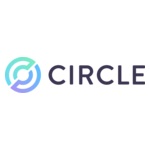What no one will tell you about raising VC funding for your start-up
“Wow, I have no idea why, but every VC call went amazing. But I haven’t heard back!”

Fundraising is a mix of understanding investor psychology and positioning your start-up to capture the narrative
This made no sense when we tried to raise Meow’s pre-seed two years ago. But it does now.
Today, I’ll share three key learnings on raising venture capital for your start-up that no one will tell you.
1. Expect pointless excitement
A VC has zero incentive to say “no” to your company. Their only incentive? To be super excited about what you’re building. Why? Because of the magic word. What every investor wants:
Optionality.
Investors don’t say “no” because they want the ability to invest in your company in case it suddenly becomes attractive. An example? Say two weeks after your call, a “Tier 1 VC” invests in your round. Amazing!
Suddenly, remember the VC who acted excited during your pitch but slow-played your follow-ups? Well, turns out they were a believer the whole time. And now, they simply reply and re-affirm their conviction in you. Now, they get to invest alongside a “Tier 1 VC”. This de-risks the investment for them. In fact, it makes them look great to their LPs (LPs are the people who give the VC money to invest). Telling you “no” at any point removes this scenario. Why would they do that to themselves? In short, a VC’s job is to maintain optionality.
And as a founder, it’s your job to eliminate it.
2. The golden goose: huge upside with very little downside risk
If you’re an unproven deal, the average VC might carry out the behaviour from lesson one.
But during the call with you, they will ask questions anyway. Why? Just to make sure they’re not missing out on something obvious.
As in — a deal so obvious that, if it existed, the company wouldn’t be talking to them in the first place. Their questions won’t be as blunt as…
“Are you a $100 bill that I get to pay $5 for?”
It will be: “What’s your moat?”
Deconstructing that:
- Why aren’t you a high-margin SaaS with a complexity moat and product market fit that I get to invest in at a discount?
- Why are you not free money?
- Come back when you have social proof.
I received this line of questioning several times. If you get a question about moat, I would argue you’re not dealing with the right investor.
In the fundraising landscape, there exist a handful of conviction-driven, independently minded investors. They march to the beat of their own drum. They don’t care what others think. Founders have immense respect for these investors. And we know who’s who from a mile away. But those folks are the exception, not the rule.
On the flip side, there are a bunch of new investors trying to make a name for themselves. And trying to stay just down the fairway.
I don’t blame them. But their incentives make it so.
As Charlie Munger once said: “Show me the incentive, I’ll show you the outcome.”
3. “What do we believe?”
Ever wonder why VCs suddenly start investing in the hot thing?
It’s in part because disruption can lead to new generational companies. But also because it’s what they can sell to their LPs. VCs have to ask their LPs for money. That money pays the VC’s salaries via management fees. They have to convince the LPs to keep funding them.
When something is hot, news of its hotness makes its way everywhere — including to the LPs! So it’s much easier for a VC to call their LPs and say they’re investing in the hot new thing instead of the stale old thing.
An example? VCs often change their websites depending on what the hot new thing is. Why? Because a VC’s website is an advertisement to its LPs.
“Invest in us. We are the [hot thing] VC.”
What does that mean for you, as a founder? Put bluntly, your odds of fundraising success increase violently if you build in the hot new thing. Or at least start in it.
Fundraising does not equal success. Not even a little. But if you happen to build in the hot new thing, it’ll make fundraising a whole lot easier.
Closing thoughts
In conclusion, fundraising is a crazy mix of understanding investor psychology and positioning your own start-up to capture the narrative.
But to be blunt, the ability to fundraise has little to no impact on building a durable business. Great businesses start with building something the customer wants and solving their problems. It scales by focusing on customer delight… not pleasing investors.
If you decide to raise money, your goal should be to get it over with as quickly as humanly possible. From there, it’s time to do the hard part: building a product customers love.











































